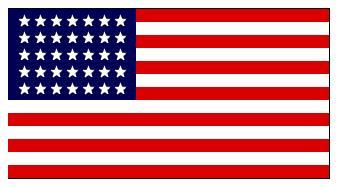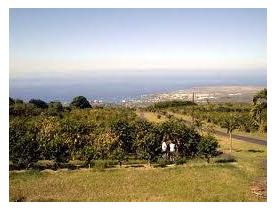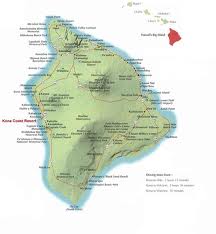July 2011 - Coffee in America & some information about Kona
 |
|
Fourth of July
Coffee takes hold in America
Americans did not initially take to coffee as quickly as the Europeans. It appears we preferred alcohol to caffeine prior to the American Revolution. Eventually we were won over though, and wars may have helped. When the British cut off the tea trade during the Revolutionary War, we drank more coffee. Consumption increased again during the War of 1812 when the British cut off the tea supply again. In addition, all things French were in vogue, including coffee.

The Civil War may have been a major turning point, at least in the North where they could get coffee. While coffee was not included in rations of the Continental Army when formed in 1775, the Union Army rations did include coffee beans, and soldiers valued their coffee ration almost above anything else. In the 1887 book “Hardtack and Coffee” written by a former Massachusetts artilleryman, John Billings, he describes how paramount coffee was to the Union soldier: the first thing a soldier prepared at mealtime was coffee. According to Billings the soldiers drank coffee with meals and between meals, when going on guard duty and when coming off duty. If ordered to march at midnight, they would make their coffee first (unless a surprise was planned). The cooks carried coffee grinders (even the lowly soldier wouldn’t stand for stale coffee). A few Sharps carbines even had butt stocks fitted to hold coffee mills.
(A fascinating history of coffee, with an emphasis on the United States is “Uncommon Grounds” by Mark Pendergrast).
Kona - A Splendid American Coffee

This July Fourth we are featuring our Hawaiian Kona Coffee - "Honaunau Estates", one of the finest coffees in the world. It is also, of course, an American coffee, at least it has been since 1898 when Hawaii became a U.S. territory. Coffee was introduced to Hawaii in 1828 using Brazilian cuttings. Kona quickly became the premier coffee district of the islands. The western slopes of the Mauna Loa Volcano form a very special microclimate for coffee growing.
Kona is well suited to coffee growing. Unlike the rest of Hawaii, Kona receives its rainfall in the summer, similar to other coffee-growing regions of the world. In addition, the high mountains shelter Kona from the persistent tradewinds that blow across the islands. In fact, the leeward side of all the major islands in Hawaii were called "Kona" in ancient Hawaiian. In most areas the coffee trees appear to be growing directly on the lava beds which underlie the entire district. Only one area is there much soil - Holualoa, where the ice age flows have had time for soil to form.
The actual area within the Kona district suitable for growing coffee is quite limited due to several factors. The steepness of the volcanoes and a narrow altitude band restrict the planting area. Below 800 feet it is too dry and hot to grow coffee; above 2,500 feet there is a natural rain forest which causes the coffee to flower year-round, rendering it impracticable to cultivate. Higher elevations are too cool; killer frosts sometimes occur as low as 4,000 feet.

Mark Twain mentions the coffee trees of Kona in his book Roughing It about his adventures as a young man in the West between 1861 and 1867. He makes a trip to "The Sandwich Islands", as Hawaii was then known, and has some interesting descriptions of the islands and its natives, laced with his humor and tall tales.
You will find that the J. Martinez & Company Honaunau Estates Kona is an excellent example of what Kona can produce. This Kona has a complex aroma, is well balanced, and has a lush and lingering finish.
Happy Fourth of July!


